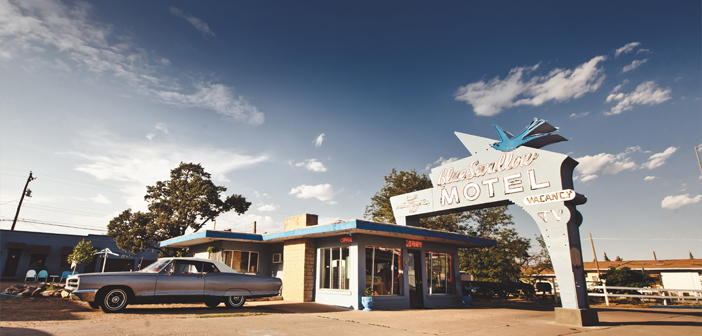Without a doubt, technology will be at the forefront in the years to come.
By Nimesh Dinubhai
We’ve come a long way baby, and I’ve got all the juicy memories to prove it. From the clunky guest room keys I used to play with as a child, to the long drives with mom and dad around town scoping out who is staying where and why, the hotel industry has definitely evolved. But that is neither here nor there; today I’m here to talk about marketing strategies and how they have changed over the years. One thing’s for sure: the hospitality sector is never going to fade away, so what can we expect in the future?
To contemplate possible future marketing strategies, we must first go back to the basics and dissect the past. Back in the 1900s, we used a barter system: I’ll give you this if you give me that. No money; just an exchange of goods. That worked for a while, but it obviously wasn’t going to work forever – we were just too greedy for that to work.
Let’s fast forward a bit. Marketing firms suddenly popped up everywhere, studying the customers wants and needs and creating commercials with large sloganed billboards. Now that worked quite well, and we still use billboards to attract roadside travelers today. Hotels branched out into corporate brands, and suddenly we had an economy of branded properties (Super 8 and Motel 6), mid-tier properties (Hampton Inn and Holiday Inn) and even resort-type properties (Doubletree and Hilton). Catchy jingles and emotionally targeted commercials that showcased laughing families in hotel rooms were produced to bring in customers. Competition was fierce, and the need to incorporate new marketing strategies was stronger than ever.
Customers had more options for where to stay and got greedy for more amenities. Hotel owners strived to create the best guest experience to compete with branded chains at the lowest possible price. Marketing campaigns and reward programs became huge and came with a hefty price tag. “Stay two nights and get one night free,” or “double reward points for two consecutive stays” – whatever it took to bring in customers.
Economic booms were on the rise, hotels popped up everywhere and rooms filled. That’s when the online travel agencies (OTAs) came in – the proverbial elephant in the marketing room. Companies like Priceline, Expedia and Booking.com were booking rooms for us, but hotels were paying high fees. When the economy started suffering, those fees felt magnified. Today, technology is a critical factor in the effort to grow revenue while managing rising costs. Hotels now are using a wide range of data analytics to set rates and connect with customers in an effort to gain repeat business. The biggest trend we see today is the need to stray away from OTAs as the primary booking source and lead customers toward direct booking.
Hoteliers today are looking to established web designers to create custom websites that are feature rich and integrate direct-booking channels to avoid the pricy OTA fees. Custom websites award customers with professional photography, links to restaurants and entertainment, direct customer reviews and even virtual tours. Best of all, guests can book rooms directly from the hotel and save money by receiving the best rates possible; the hotels save money as well by avoiding commission fees. Content is the key, and hotel owners want to provide guests with information that is not only relatable but that uses words and phrases to paint the customer a panoramic picture that they will want to read more about and then book.
Millennials have become the fastest growing segment in the hospitality industry. This customer segment is turning toward technology to get that “unique and novel” hotel experience. Be assured if a stay is not anything short of spectacular, then Facebook, Twitter and Instagram will know immediately. This is where social media marketing comes into play. It’s not enough to have a custom website, but it has to be linked to all social media outlets and constantly monitored and updated to reach the widest range of customers in today’s market.
Marketing evolution is inevitable, but it takes a major change in the operating climate for hotel owners to recognize the need for change. Hospitality organizations like AAHOA provide hoteliers with quarterly and annual conferences and educational workshops to keep owners aware and educated on the growing technological trends. Owners are attending or sending staff to conferences like the Direct Booking Summit this past September in Washington D.C., where hoteliers learned how to attain more bookings via their own websites. Educational conferences are all the rage, and we will see more hospitality professionals attend to keep up on growing marketing trends.
So what can we expect in the years to come? More, more and more. More mobile bookings, more targeted content, more personalized emails, more video marketing and more educational conferences. And we can expect technology to be in the forefront of all these trends. ■
Nimesh Dinubhai, a lifetime member and ambassador for AAHOA, founded Websrefresh in 2003, a provider for hotel website design, development and all related internet services. He has a BA in Computer Information Systems from Devry University and owns two Arizona hotels, one of which earned the Historical Hotel Award in 2014. Dinubhai lives in Phoenix with his wife and two children. To learn more, visit www.websrefresh.com.




